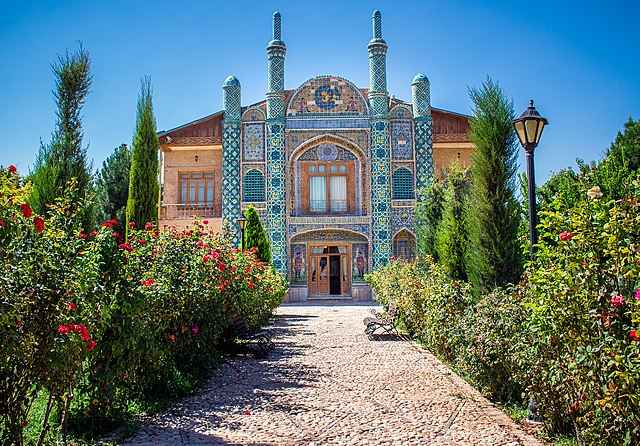Bojnurd
Bojnurd is the capital of the North Khorasan province in northeastern Iran. The city of Bojnurd is located north of the Alborz mountain range and south of the Kappe Daq Mountains. In the northwest area, present-day Bojnurd, there is a hill that has been home to several historical works. The history of this city dates back to the Sassanid period. Then the city became home to various mystical and scientific figures. Due to the emergence of many towns around this city, Bojnurd is one of the main tourist destinations in Iran.
Mirror Fire Temple
A building located about 100 kilometers west of Bojnurd, near the road that connects this city with the Golestan province. Dated to Sassanid times and built with stones and mortar, some historians claim that the historical monument was a Zoroastrian temple.
The Mafkham House of Mirrors
Located north of Bojnurd, it is a grand and glorious building considered one of the most valuable historical monuments in this city. This building belonged to one of the commanders of the Qajar era, General Mafkham. The facade is decorated with tiles, as well as the interior decorated with tiles and mirrors, multiplying its beauty. It is a two-story building with nine rooms. One of the rooms is a living room and its walls and ceiling are decorated with fine pieces of mirror. In the past, the house was located in the middle of a large orchard.
Qorjod Conservation Area
Very popular for the diversity of its flora and fauna. This area separated from the Golestan National Park in 1982, was then announced as a conservation area. It covers an area of 43,000 hectares and is located at altitudes that range between 1,000 and 2,700 meters above sea level. Its average annual temperature is nine centigrade and annual rainfall reaches up to 660 millimeters. High pinnacles, large rocks, innumerable valleys and waterfalls, large plains, vast forests and grasslands, small and large caves, wide springs, and the diversity of flora and fauna attract the attention of tourists traveling through the city. region.
Esfidan town
Located in the rural district of Garmjan, in the county of Bojnurd. The village lies at the foot of the Aladaq Mountains, which in turn encompass much of Turkmenistan, northern Afghanistan and northeastern Iran. The town enjoys a cold and dry climate and its general slope follows the natural gradient of the region, that is, towards the north. The village and the surrounding mountains are exposed to rainfall during cold seasons. Therefore, it is covered in snow for most of the year, giving rise to its name whose meaning is white.
The most important tourist attractions in town are the natural attractions. Situated at the foot of the Koppeh-Daq plateau and blessed with abundant valleys and rivers, Esfidan is known as a popular summer spot. The concentration of valuable natural elements such as the river, the ancient trees, the gardens, as well as the variety of views of the terrain, the labyrinthine paths and the natural diversity have created a magnificent sight.
Hamid waterfall
Hamid village is located 7 kilometers south of Bojnurd. In the south of the town there are narrow valleys with massive rocks and at the bottom of the valley there is a 25 meter high waterfall 2 kilometers from the town. The water in the waterfall comes from the town of Abshur. Both the town and the waterfall attract the attention of mountaineers and it is a good place for hiking.
Kurmanji Village
A green and refreshing place, considered one of the most beautiful villages in the region. Kurmanji is actually one of the popular Kurdish languages, as this part of Iran is also populated to some extent by Kurds. His presence in this region dates back to the time of Shah Abbas I in the 17th century, when he caused Kurds to migrate from west to east Iran to face warlike threats from neighboring countries. However, the Kurds presided over Khorasan even before the order of the Safavid king; Shah Abbas I. This village enjoys a mild climate and several panoramic views that have made it a pleasant destination for the inhabitants of the neighboring villages. The green nature, the tall trees and the water mills have given this town a spectacular view. The pomegranate of the Kurmanji people is one of the best in all of Iran.



Comments